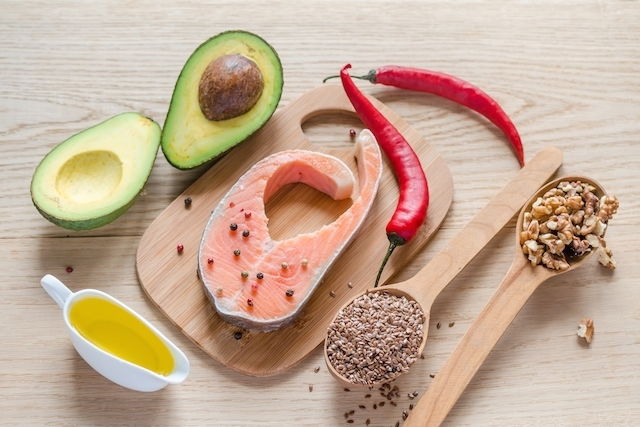HDL cholesterol is a type of cholesterol in the blood that is required to maintain adequate functioning in the body. Having higher HDL levels is associated with a decreased risk for cardiovascular disease.
HDL often referred to as "good cholesterol" because it absorbs fat before it starts to accumulate in the arteries. Absorbed fat is taken to the liver, where it is filtered and eliminated. filtered in the liver and eliminated
To ensure healthy HDL cholesterol levels, you should eat foods that are rich in healthy fats, like avocado, chestnuts, peanuts and naturally fatty fish, like sardines and salmon. Regular physical activity is also advised.

Normal range
For both men and women, HDL cholesterol levels should be above 40 mg/dL, while LDL levels (also known as bad cholesterol) should be under 130 mg/dL. Read more about the normal ranges of cholesterol and your levels should be.
Importance of HDL
HDL cholesterol removes fat molecules from the bloodstream, where they are taken to the liver for metabolization and elimination. It has clotting, anti-inflammatory and antioxidant properties, which are most effective when HDL levels are within a normal range.
HDL is also important for the production of hormones, bile, and vitamin D. These are all compounds that are necessary for adequate functioning of the body.
HDL cholesterol acts as a protector for the cardioavascular system. It prevents the development of diseases like heart attack, atherosclerosis, stroke, and thrombosis. To ensure these effects, HDL and LDL levels should both be within normal range.
Low HDL levels
To know if your "good cholesterol" is too low, you should complete a blood test that looks at your lipid levels, which usually include total cholesterol, HDL, LDL and triglycerides.
Low HDL levels will usually not cause any signs or symptoms. However, low HDL and high LDL can be suspected in sedentary patients with excess abdominal fat and who have a high fat diet with processed foods.
Causes of low levels
Low HDL levels can be caused by:
- Sedentary lifestyle
- Excess weight
- Excessive alcohol intake
- Smoking
- Diet with high amounts fatty foods, sugar, salt and processed food
- Metabolic syndrome
- Diabetes
- Medications that contain testosterone or other steroids.
Low HDL levels can also be noted in patients with autoimmune disorders (like rheumatoid arthritis) and inflammatory eye disease.
How to increase
To increase HDL cholesterol levels, you should consult a registered dietitian for a personalized diet plan that considers your current cholesterol levels and nutritional necessities. HDL can usually be increased by eating healthy fats like:
- Fatty fish, like salmon sardines and tuna which are rich in omega-3 fats
- Seeds, like chia, flaxseed and sunflower, which are natural sources of omega-3 and fiber
- Nuts, like brazilian nuts, peanuts, walnuts and almonds
- Avocado and olive oil, which are rich in unsaturated fats that can positively impact cholesterol levels
Another important consideration is to be physically active. You should exercise at least 3 times per week to regulate weight, cholesterol production and fat burning.
Why higher levels are important
HDL cholesterol is responsible for absorbing fat in the blood and depositing it in the liver for elimination through the stool. It prevents the accumulation of fat in the body and within the blood vessels. Low HDL levels can cause negative effects, as it is related to unhealthy levels of LDL and triglycerides. This can increase the risk for conditions like atherosclerosis or a heart attack.
In addition, low HDL is related to an increased risk for developing autoimmune diseases and infections. It can also cause tissue damage to blood vessels and interfere with clotting processes.
